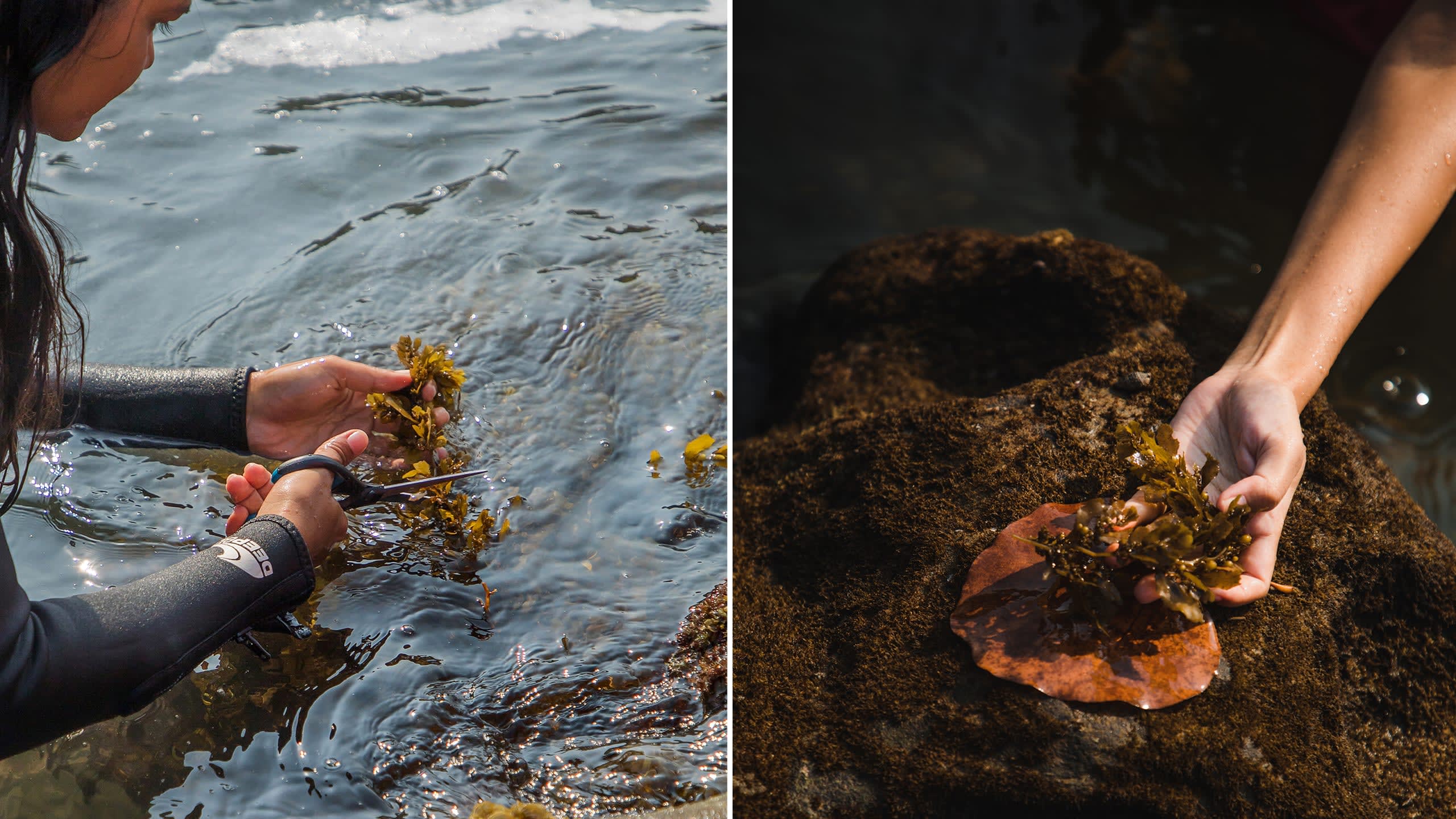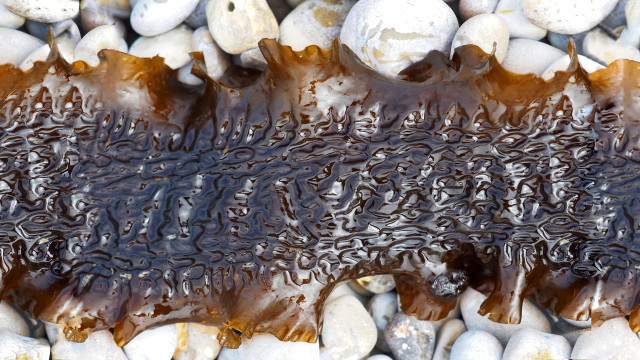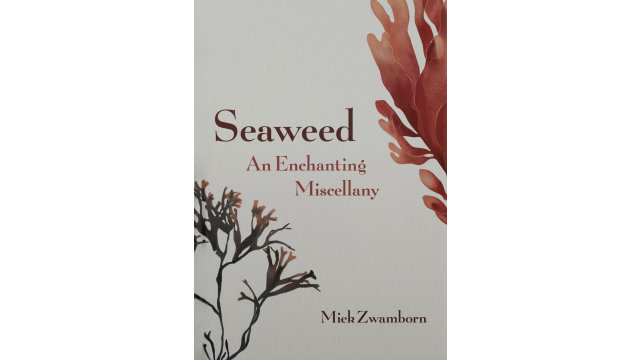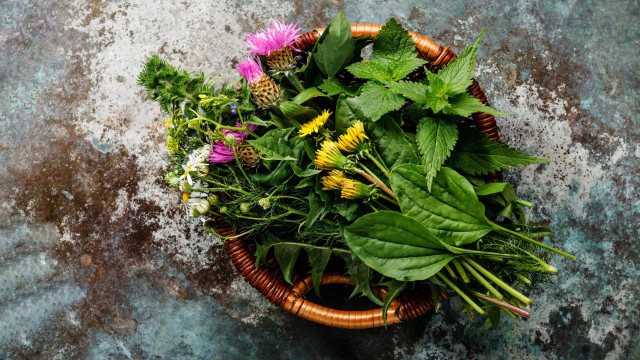The Forest of the Sea

It may surprise you to know that we consume seaweed on a daily basis. Not as a whole food necessarily, but in the form of extracts that are used as gelling and clarifying agents in products ranging from beer to toothpaste. I work with seaweed in India, which isn’t yet one of the world’s biggest seaweed producers, but has a significant, fast-growing industry.
In India, seaweeds for commercial uses are mainly hand-harvested by local fishing communities in the coastal state of Tamil Nadu. The seaweed is dried along the shore, then sent to processing centers in different parts of the country, where different gels are extracted. One example of a seaweed gel is agar-agar, also commonly called China grass. Other extracts include carrageenan, used in toothpaste and ice cream, and sodium alginate to make bioplastics.
India is on a path to ramp up seaweed production, aiming to produce over 400 percent more by 2026, according to the Fisheries Department. With a rapid move towards the commercialization of existing seaweed forests for biofuel and bioplastics, it is vital to address the intrinsic value of seaweed forests as thriving ecosystems, with highly specialized adaptations that support a range of species.
As with most of our traditional fisher knowledge, there’s a need to seek out and preserve knowledge around seaweed, whether in the form of sustainable harvesting practices, the identification of local species, or recipes from coastal communities.
Learning to see seaweed
The first step is simply to stop and take notice. If the word seaweed means anything to most people — other than sushi rolls or a component of some very expensive skin cream — it is merely some non-descript brown clumps of plant-like matter on the beach, easy to overlook and ignore. Yet India has over 800 species of seaweed along its coasts, and these species should not only be seen through a commercial lens.
Through my studies in conservation biology, I’ve spent many long hours at tidepools along the coastlines, observing how seaweeds grow. I am fascinated by how some of them prefer the cozy rocks that are sheltered from the waves, while others grow suspended from steep edges where the waves crash against the tidepools. Some grow quite rapidly, spawning with the full and new moon, while others take their time, growing at their own mysterious pace.

Magic at the edges of habitats
A peninsula, India has around 8,000 kilometers of coastline: the delineation of the parts of this earth where the land meets the sea. Spaces such as this, at the edges of two separate habitats, are often higher in species diversity and at times more resilient. This “edge effect” is seen in tidepool ecosystems, where creatures carve themselves elegantly into the crevices of rocks as they wait for the ebb and flow of the tides, their bodies adapted for both the harsh exposure to sun and cold immersion in water.
Of all the weird and wonderful creatures that inhabit the tidepools, my favorite are the swirling bunches of seaweed. These algae are some of the Earth’s first inhabitants, and over time have mastered the art of absorbing nutrients through their slender bodies and thriving in the harsh environments of transient tidepools.
Seaweed forests create a safe haven for other tidepools inhabitants too. I love watching the crabs prune the top ends of the seaweed, their purple-pink shells likely colored by the pigments of the seaweed they eat. If I’m patient enough, I might observe the light blue flash of a barnacle as it opens to feed from the incoming tide. Or the slow gait of a green sea slug as it moves languidly through the fronds of a seaweed forest, beautifully camouflaged, completely at ease.
Sometimes a damsel fish will hover around me, almost defensively protective of its patch of seaweed. Through the green clumps of the forest, l may glimpse the yellow orange of a butterfly fish. Seaweed forests are endlessly mesmerizing, slowly revealing their hidden secrets.
Invisible supply chains
However, when it comes to the visibility of seaweed supply chains in India, just like palm oil supply chains in Southeast Asia, they are very hard to trace and even more difficult to regulate. Like palm oil, the cultivation and harvesting of seaweed can cause great harm to the marine environment if context isn’t considered.
About two decades ago, in a corporate social responsibility initiative gone infamously wrong, Pepsico introduced the invasive algae species Kappaphycus alvarezii from the Philippines to coastal Tamil Nadu. The species competes with the coral reefs of the Gulf of Mannar Marine National Park for light and nutrients, posing a threat to this bountiful native ecosystem. Even without such misguided efforts, a growing demand for seaweed gels in India and a lack of supply chain transparency means that we could be overharvesting and degrading our native seaweed forests and reefs with little idea of the extent of the damage until it’s too late.
Just as land forests find their way into the illustrated pages of children’s books, and are given due importance (at least on paper) in our legal systems, seaweed forests need to be equally celebrated and protected. The next time you brush your teeth, drink a tall glass of beer, or swallow some ice cream on a hot day, think about this unassuming oceanic ingredient, and its origins in the enchanting forests along the coast.
READ | GROW: Kelp Is on the Way
Key Takeaways
- Consume seaweed as a whole nutritious food.
- Commercial seaweed farming harms biodiversity.
- Seaweed is rich in vitamins and minerals.







